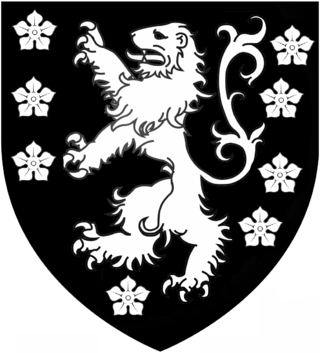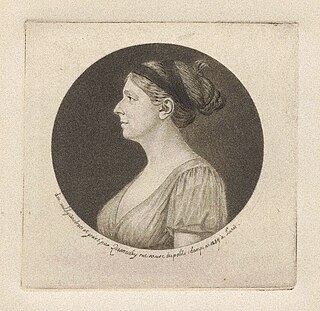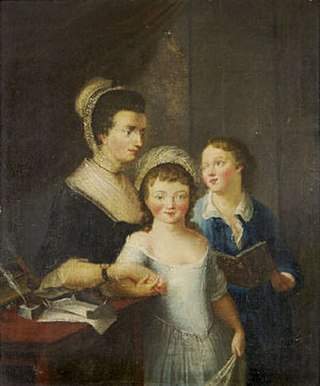Related Research Articles

Baron Clifton, of Leighton Bromswold in the County of Huntingdon, is a title in the Peerage of England. It was created in 1608 for Sir Gervase Clifton, who commissioned Prebendal house which was built by John Thorpe and later owned by the Clifton baronets branch of the family. The peerage was created by writ, which means that it can descend through both male and female lines. Lord Clifton died without surviving male issue and was succeeded by his daughter Katherine, the second Baroness. She married Esmé Stewart, 3rd Duke of Lennox. They were both succeeded by their eldest son James, the fourth Duke and third Baron. When he died the titles passed to his son, the fifth Duke and fourth Baron. On his death in 1660 at the age of 11, the barony separated from the dukedom. The barony was inherited by the late Duke's sister Mary, the fifth Baroness. She married Richard Butler, 1st Earl of Arran, but died aged only 18. She was succeeded by her first cousin the sixth Duke of Lennox, who became the sixth Baron Clifton as well. He was the son of Lord George Stuart, the fourth son of the third Duke and the second Baroness Clifton. On his death, the barony and dukedom again separated.

Rathfriland is a market town in County Down, Northern Ireland.

William Willoughby Cole, 1st Earl of Enniskillen, styled The Honourable from 1760 to 1767, then known as the Lord Mountflorence to 1776 and as the Viscount Enniskillen to 1789, was an Irish peer and politician.
Edward Ward, styled The Honourable from 1770, was an Irish politician.
Col. Robert Ward PC (Ire), styled The Honourable from 1770, was an Irish politician and colonel of the South Down militia.

Ralph Howard, 1st Viscount Wicklow PC (I) was an Anglo-Irish politician and nobleman.
William Crosbie, 1st Earl of Glandore, known as The Lord Brandon between 1762 and 1771 and as The Viscount Crosbie between 1771 and 1776, was an Irish politician.

Margaret King (1773–1835), also known as Margaret King Moore, Lady Mount Cashell and Mrs Mason, was an Anglo-Irish hostess, and a writer of female-emancipatory fiction and health advice. Despite her wealthy aristocratic background, she had republican sympathies and advanced views on education and women's rights, shaped in part by having been a favoured pupil of Mary Wollstonecraft. Settling in Italy in later life, she reciprocated her governess's care by offering maternal aid and advice to Wollstonecraft's daughter Mary Shelley and her travelling companions, husband Percy Bysshe Shelley and stepsister Claire Clairmont. In Pisa, she continued the study of medicine which she had begun in Germany and published her widely read Advice to Young Mothers, as well as a novel, The Sisters of Nansfield: A Tale for Young Women.
William Blachford (1730–1773) was the father of poet Mary Tighe; from 1766 to 1773 he was librarian of Marsh's Library, Dublin.
Stephen Moore, 2nd Earl Mount Cashell, styled Lord Kilworth between 1781 and 1790, was an Anglo-Irish politician.
George William Tighe was an Irish agricultural theorist who spent much of his life in Italy. Through his marriage to Margaret King, he exerted an influence on the radical poet Percy Bysshe Shelley.
John Bligh, 1st Earl of Darnley, was an Irish peer born of an English family.
Marianne-Caroline Hamilton was an Irish artist and memoirist. Her memoirs, Reminiscences of Marianne-Caroline Hamilton (1777–1861), were published in 2010.

William Brownlow PC (I) of Lurgan, County Armagh was an Anglo-Irish politician.
Hugh Howard, styled The Honourable from 1776, was an Anglo-Irish politician.
Richard Wingfield, 5th Viscount Powerscourt was an Anglo-Irish peer.

Theodosia Bligh, 10th Baroness Clifton, was an English peeress, born Theodosia Hyde.

Theodosia Blachford was an Irish philanthropist and leading figure in the Methodist Church in Ireland.
Robert Bligh was an Irish Anglican dean in the 18th century.
Thomas Cherburgh Bligh was an Anglo-Irish Whig politician who served in the Irish House of Commons and the Parliament of Great Britain.
References
- ↑ Edward Tighe C.J. Woods, Dictionary of Irish Biography.
- ↑ The Tighe Family in Woodstock
- ↑ "DMBI: A Dictionary of Methodism in Britain and Ireland". dmbi.online. Retrieved 23 June 2022.
- ↑ Green, Dudley (2010). Patrick Bronte: Father of Genius. History Press. p. 26. ISBN 9780752462479.
- ↑ Family History - Tighe of Rossana, Co. Wicklow. bu Turtle Bunbury.
- ↑ 'The Collected Letters of Mary Blachford Tighe' By Mary Tighe